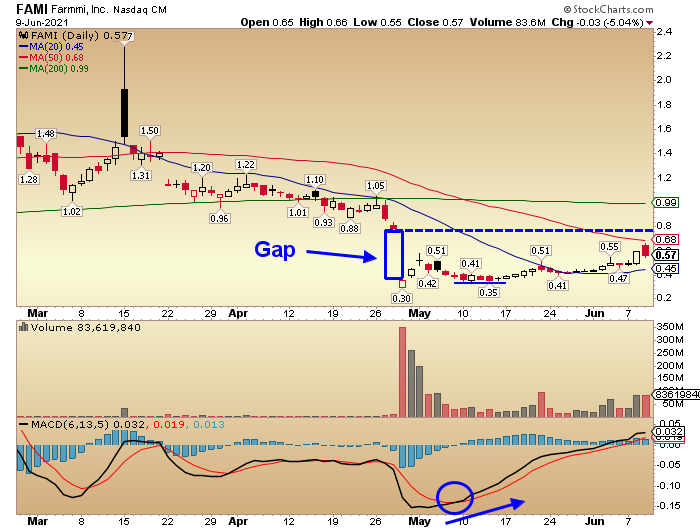

breaking out of a nearly 6-year base in late 2016, with prices gapping above resistance on high volume, not filling any of the gap, and then quickly seeing upside follow-through.Īnother great example is Square in 2017. The less that it’s filled, the more clear that a strong new trend has developed.Ī good example of this is Deere & Co. As a result of a new trend bringing in new market participants and catching many off-sides, this gap generally does not fill and sees upside follow-through relatively quickly. These types of gaps can be caused by anything from a stock going ex-dividend, a trading vehicle re-adjusting to the index it’s tracking due to different market/trading times, or a simple short-term supply/demand imbalance.Īs we can see in the chart of the S&P 500 from the last few weeks, there have been several common gaps on average volume that were quickly filled and did not impact the overall trend (or lack thereof).Ī breakaway gap occurs when prices are breaking out of a range on significant volume, developing a new trend. It generally occurs during trading ranges or areas of congestion, is accompanied by relatively low trading volume, and is usually filled very quickly. There are four types of gaps, each with their own characteristics and significance: The common, breakaway, runaway, and exhaustion gap.Ī common gap is the most frequent and insignificant gap. If a gap only retraces a portion of the way to the closing price of the day preceding the gap, then it’s partially filled. Once it’s retraced fully, then the gap is considered filled. This post is going to discuss the four types of gaps and explain why this phrase is not something any market participant should take seriously.įirst off, what does it mean for a gap to be filled?Ī gap “getting filled” is when price action at a later time retraces to the closing price of the day preceding the gap. Nothing deters a trader like a 20 per cent spread.From the desk of Tom Bruni a saying among market participants that “all gaps need to be filled” or “all gaps are eventually filled”, but as with most market generalizations, this saying shouldn’t be taken at face value. If the market makers don’t want buyers they simply widen the spread. If they didn’t, they might be forced to deal a lot of stock they simply do not have, having failed to anticipate a surge in volume and demand – gapping the stock up makes sense for them as an act of defence. Market makers will gap up a share if they believe the stock will respond positively to an RNS, and continue its trajectory upwards. There doesn’t need to be any news for them to gap a stock up or down as they can set prices as they like, and unless we deal in one of the four daily auctions (liquidity here is poor) then we have to deal through them. Stocks that trade on SETSqx can be moved up and down by the market makers. Gaps don’t just come from trading updates and RNSs, though – anything can move a stock.
#STOCK FILL THE GAP UPDATE#
There could be a positive trading update or a profit warning in the early morning RNSs, both of which could move the stock up or down. This occurs between the stock’s closing price and the stock’s opening price the next day. A gap is self-explanatory – it is a gap in the price of a stock.


 0 kommentar(er)
0 kommentar(er)
